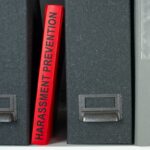PPE, or Personal Protective Equipment, is a very broad term that can include anything from a sun hat to a full-face respirator. The term describes anything is anything used or worn by a worker to minimise risk to their health or safety.
Appropriate PPE is sometimes the only way to control the risk to health and safety of a worker, and it is therefore critical that organisations supply, and ensure the use of, appropriate PPE. But how to be sure what’s appropriate?
In a highly regulated country like Australia, most key items of PPE related to maintaining safety in the workplace are covered by an Australian Standard. Providing the required PPE is certified under the relevant Standard, the employer should be able to have confidence that it will perform as expected to protect the worker. Unfortunately, there are products on the market that claim to meet the requirements of Australian Standards when in actual fact they don’t, which is the first among a range of pitfalls that can diminish the efficacy of PPE.
There is, however, a basic checklist that employers and/or their procurement personnel can use to help ensure that their expenditure on PPE actually buys a piece of equipment that will provide the expected level of worker protection.
- Inform yourself as to which Australian Standard applies to the equipment concerned, and check that the Standard number and certification marks are present on the item.
- Check that whatever the PPE is specifically designed for is identified on its labelling.
- If the item comes in more than one size, ensure the PPE is the correct size(s) for the intended user(s). Consider professional fitting assistance if there is sizing complexity.
- Check that the specific end-use of the PPE is included in its functional description (e.g. confirm a respirator is suitable for use with the class of chemical being used in the workplace).
- Don’t buy second-hand PPE, as it can be impossible to tell whether the equipment has been maintained in a fit-for-purpose standard or damaged.
Also, once an item is purchased:
- Ensure that processes are implemented to check and maintain the equipment. This might include anything from a regular observation to check for deterioration or cracks, to a regular third-party inspection, depending on the equipment concerned.
- Replace the PPE as often as required to maintain its safe performance, depending on the conditions in which it is used.
- Keep a good record of PPE issued in order to both ensure all workers have the protection they need, and to facilitate an appropriate replacement schedule.
Please contact QRMC for more information.











